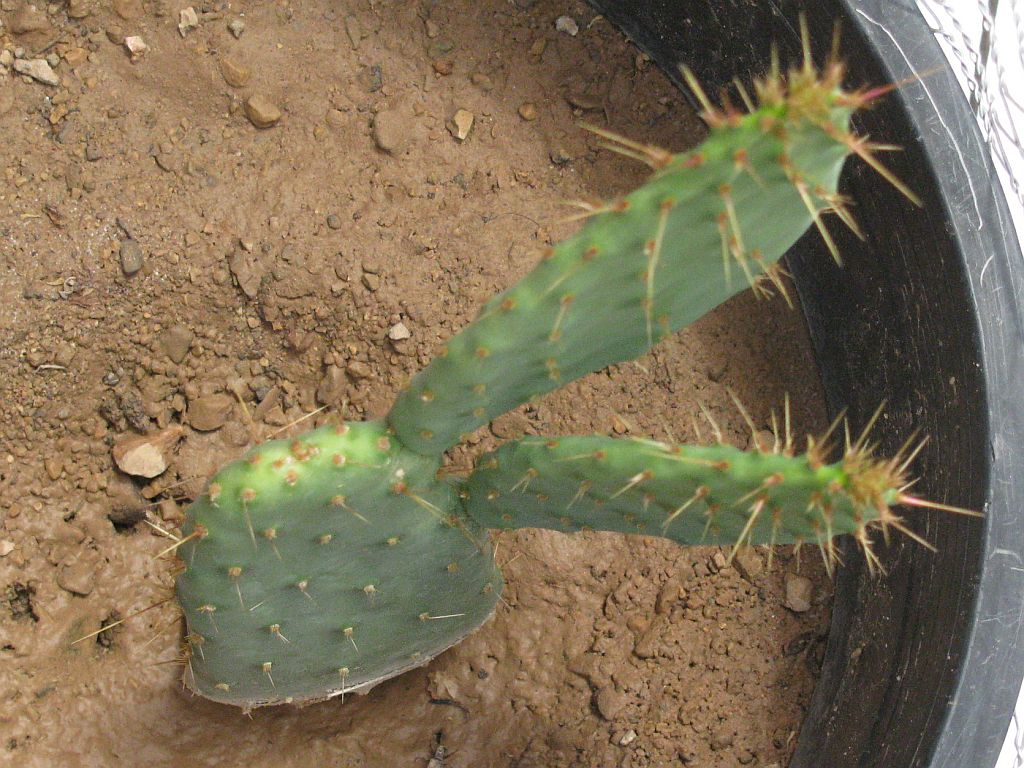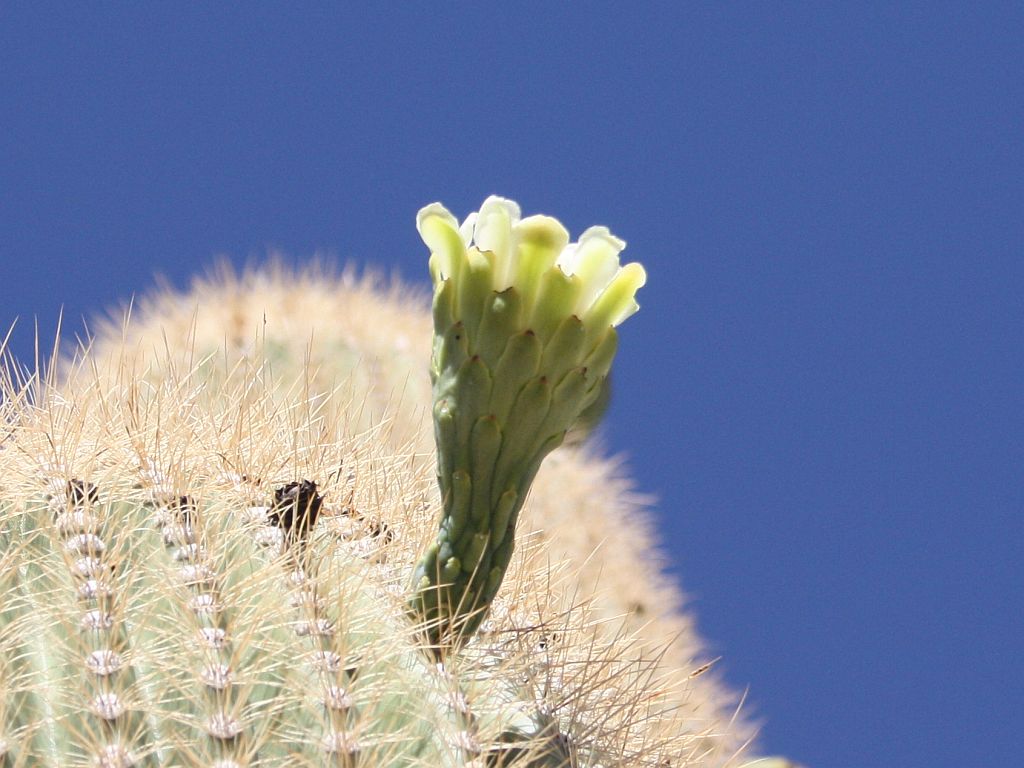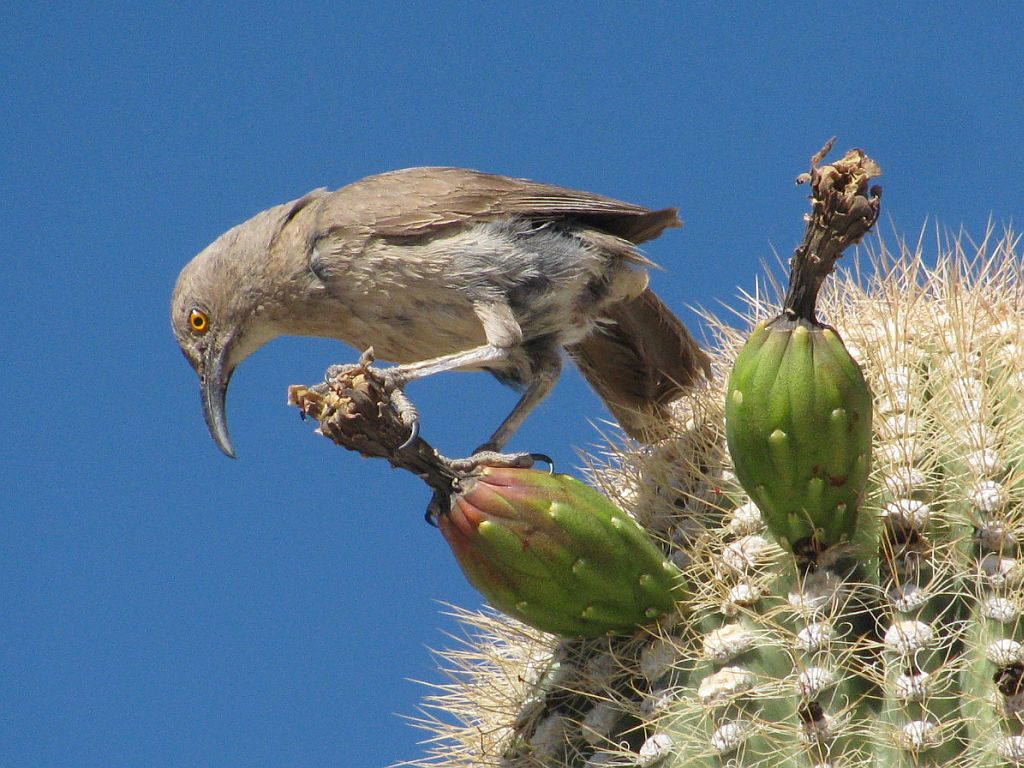July 2011
Thresher Thief
I guess we won’t be harvesting any of the saguaro fruit this season since the birds seem to gorge themselves on the fruit before we can get them to ripen on the cactus. This is a curve billed thresher helping itself to the pears on the saguaro this morning. We call this the “Skut Farcas” bird because of the yellow eyes – YELLOW EYES!! (Reference – “A Christmas Story” – a quotation by Ralphie.) Click on the image to enlarge.
Carborexia — AGW Psychotic Disorder
An unwanted (or maybe wanted by Gore, et al) side effect of global climate change hysteria is a new class of over-reacting nutjobs developing psychosis based on the misconception that humankind is actually capable of destroying the planet by burning fossil fuels.
I read this article published on the CO2 Science website about Austrailian scientists diagnosing “Carborexia,” The Debilitating Disease of Climate Alarmism. Excerpt:
Writing in the International Journal of Climate Change Strategies and Management, Searle and Gow (2011) say “there is a growing consensus that increased awareness about climate change is leading to negative emotional reactions in certain individuals (Fritze et al., 2008),” while noting that “expressions of negative psychological states relating to climate change appear in popular commentary, public opinion polls and increasingly in the medical and psychological literature (Searle and Gow, 2009).” And they add that “doctors are reporting that more and more patients, presenting with anxiety and depression, are citing climate change news as something that they are having difficulty coping with” and that “leads to distress and/or interferes with daily living (Fritze et al., 2008).”
The two Australian researchers note that “other climate related pathologies are also emerging,” citing the work of Wolf and Salo (2008), who “described a patient with climate change delusions and visions of apocalyptic events who believed that his personal water consumption could lead to the deaths of millions of people,” while they write of “an increase in climate-related obsessive compulsive checking behaviors such as checking: gas and power meters to monitor their usage; taps for leaking water; and petrol consumption via the car’s odometer reading.” In fact, they report that displays of climate change related obsessive and depressive behaviors has led to the creation of the term “carborexia,” which “refers to individuals who have a fanatical desire to reduce their personal carbon footprint, to the point where it severely affects their lifestyle and normal daily activities.”
Emphasis mine. Read the rest of the article.
Cow’s Tongue Cactus
 Cow’s Tongue prickly pear cactus is also known as “Lawyer’s Tongue,” “Donkey Ear” and opuntia engelmannii var. linguiformis. We collected a specimen that was laying on the ground under a larger plant in the wash running through one of the local parks. We placed it in a pot of native soil from our wash a couple of months ago. I think it likes it here because it quickly grew two new pads and there are more coming on top of them.
Cow’s Tongue prickly pear cactus is also known as “Lawyer’s Tongue,” “Donkey Ear” and opuntia engelmannii var. linguiformis. We collected a specimen that was laying on the ground under a larger plant in the wash running through one of the local parks. We placed it in a pot of native soil from our wash a couple of months ago. I think it likes it here because it quickly grew two new pads and there are more coming on top of them.
We found WufStuff, a very interesting website that describes this cactus and has a lot of good information about prickly pear cacti in general. Excerpt:
A common sight in Arizona gardens is the Cow’s Tongue Prickly Pear. Folks like this cactus because of the unusual shape of the pads, which strongly resemble a cow’s tongue. It takes little water, and has yellow or orange flowers in the spring that form along the margins of the pads, followed by numerous red fruits.
The cultivating of these cactus requires only that it be planted and left to grow on it’s own, no fertilizer, no watering, nada, nothing. Best grown on land useless for growing corn and other Cattle feed stock. After a year or two, the pads are ready to eat and the fruit is ready to harvest if so desired. After each feeding the cactus is left to grow another meal which happens quite quickly in the desert lands of the Southwest.
Click on the image above to enlarge.
State of Fear – A Book Report
 I recently finished Michael Crichton‘s “State of Fear” novel. Although it is fiction, Dr. Crichton, as usual, did the supporting research into the topic of global warming and the hysterical reactions of climate fascists. There is an author’s message and a complete bibliography at the end of the book.
I recently finished Michael Crichton‘s “State of Fear” novel. Although it is fiction, Dr. Crichton, as usual, did the supporting research into the topic of global warming and the hysterical reactions of climate fascists. There is an author’s message and a complete bibliography at the end of the book.
This passage is on the foreword to the novel:
This is a work of fiction. Characters, corporations, institutions and organizations in this novel are the product pf the author’s imagination, or, if real, are used fictitiously without any intent to describe their actual conduct. However, references to real people, institutions and organizations that are documented in footnotes are accurate. Footnotes are real.
It was a hell of a novel. All the time indicting the alarmists for what they are: extremists and carbon tax and fund raising profiteers. I highly recommend this novel not only for entertainment, but to educate the reader with some of the actual facts about climate change from reputable scientists.
From the State of Fear website:
This is Crichton’s most wide-ranging thriller. State of Fear takes the reader from the glaciers of Iceland to the volcanoes of Antarctica, from the Arizona desert to the deadly jungles of the Solomon Islands, from the streets of Paris to the beaches of Los Angeles. The novel races forward on a roller-coaster thrill ride, all the while keeping the brain in high gear. Gripping and thought provoking, State of Fear is Michael Crichton at his very best.
Finally, here is a quote from Dr. Crichton in his presentation,“Aliens Cause Global Warming,” to Jet Propulsion Laboratories in 2003:
“Historically, the claim of consensus has been the first refuge of scoundrels; it is a way to avoid debate by claiming that the matter is already settled. Whenever you hear the consensus of scientists agrees on something or other, reach for your wallet, because you’re being had.”
— Michael Crichton
Fishhook Cactus Flower
When we were getting our landscape irrigation installed, the crew dug up a small fishhook barrel cactus. One of the guys asked if I wanted to plant it somewhere else, so I put it into a six inch pot to allow it to grow enough for transplanting into the cactus garden. Unexpectedly, today the tiny fishhook has this beautiful pink flower. Click on the image to enlarge.




